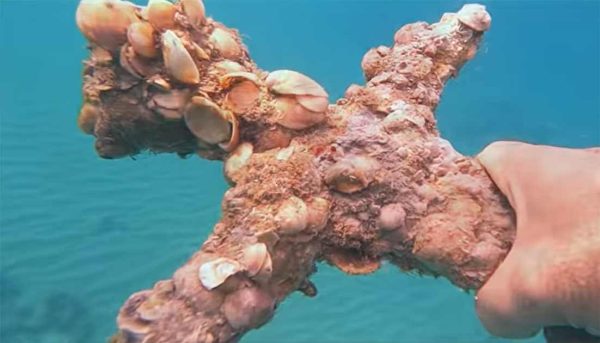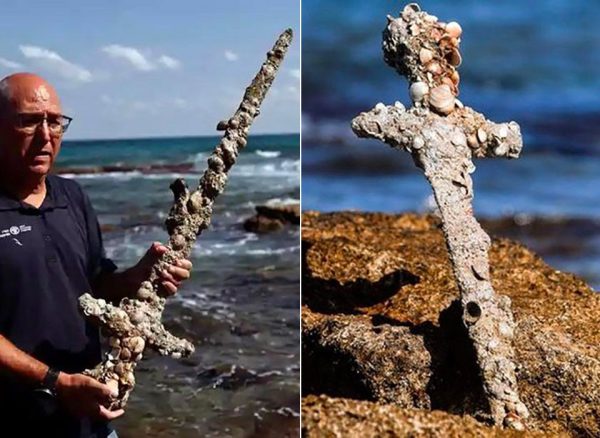In a remarkable discovery off the coast of northern Israel, a resident of Atlit, Shlomi Katzir, stumbled upon an ancient 900-year-old sword from the time of the Crusades.

While diving near his hometown, Katzir found the four-foot-long sword covered in shells and marine organisms on the seabed off the Carmel coast. The shifting sands had seemingly revealed these centuries-old artifacts, bringing them into sudden visibility.
The sword, encrusted with marine life, has been preserved in impeccable condition. According to Nir Distelfeld, an inspector from the Israel Antiquities Authority (IAA), this beautiful and rare find unmistakably belonged to a Crusader knight.

The discovery provides a fascinating glimpse into a different era, echoing the times of knights, armor, and swords.
Archaeologists had been monitoring the area, a natural cove that has provided shelter to ships for millennia, before Katzir’s find. Previous discoveries indicated the site’s activity as far back as 4,000 years ago.
Unpredictable conditions in the ocean often bring artifacts to the surface, and an increase in recreational diving in the area has led to more of these objects resurfacing in recent years.

Koby Sharvit, director of the IAA’s marine archaeology unit, explains that even the smallest storm can shift sand, revealing some areas of the seabed while burying others.
Alongside the sword, Katzir spotted pottery fragments and stone and metal anchors. Given the sword’s location more than 600 feet from the coast, Sharvit suggests it was a Crusader’s weapon. Muslim forces had built fortifications along the coast to defend against arriving Christian forces but did not travel by sea themselves.

The sword, still covered in encrustations, is now in the hands of the IAA’s National Treasures Department. Scientists plan to clean and study the weapon before putting it on public display, offering a unique window into the historical legacy of the Crusades.





